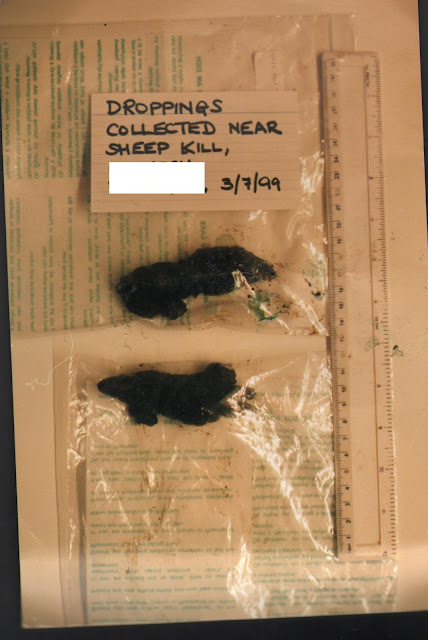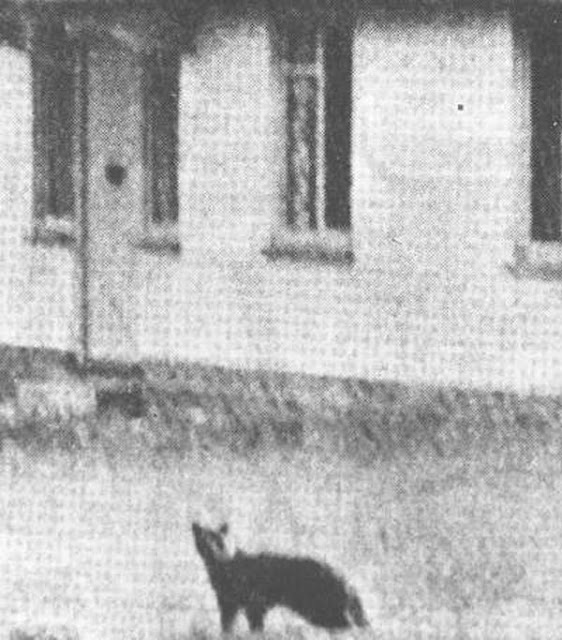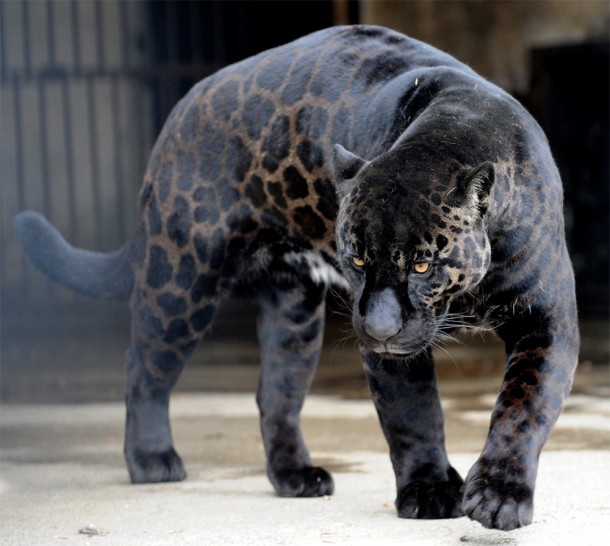Back in the 1990s I was asked to submit a series of articles for a newspaper. The articles were rejected because some of the content seemed to be critical of "gentry" in the past who had descendents running running newspapers. Another newspaper then got interested but was interested in hiring people to trap or kill one of the animals I was writing about.Yes, that was really not going to work with me -even if I needed the money.
Instead I wrote some more localised articles for County magazines. These were gloss publications aimned at the better off folks and were cheap-skates of the highest order when it came to payment but what was a struggling writer to do?
The original articles were under the series title I am using as this blog header. They are basically background and to inform the Reader of what is the new fauna of the UK and, perhaps, at some point in the future. it will be fauna that the Department for Environment Farminga nd Ruaral Affairs (DEFRA) will stop killing. We are, after all, in 2022.
I have left the articles as they were written in the 1990s plus a few corrections.
_____________________________________
Back in 1975 a very young, moustached naturalist was talking and writing to people in Surrey, Wales, Devon and Cornwall and trying to gather accurate information on a specific type of animal, or rather "animals" the so called "big cats" to be precise.
There had been the usual jokey items on TV and radio news as well as the national press about "over-sized pussycats" and how some people "cutting back on the cider might decrease the number of sightngs". One thing I had noted was that the majority of reports were nowhere near pubs, not after closing hours and in good viewing conditions.
As a naturalist I did not actually believe that cats sighted were anything other than temporary escapees.
I had been in touch with, and gotten great cooperation from, the Ministry of Agriculture, Fisheries and Food (MAFF) over unusual sea creatures washed ashore on the British coast (Dead aquatic Creatures of Canvey Island, Essex covered in Some Things Strange & Sinister and updated in Pursuing The Strange & Weird -A Naturalist's Viewpoint) so I thought I would try them first.
I think the giggling over the phone and the polite joking in letters said it all.
According to MAFF there were no big cats or large cats of any kind living feral in the UK, though various people had reported sighting large grey and also black cata but "These were probably dogs seen under unusual or poor viewing conditions". I referred to certain reports I had looked into up to that point but was told "all dogs". I got the distinct impression that no one was really interested in the subject except for one MAFF man who was retiring and when I spoke to him he told me:
"Yes, I've no doubts there are some about since the DWA (Dangerous Wild Animals Act) came in but how many goodness knows. Officially, of course, it's all dogs!"
Above: said to be the first ever image of the Surrey Puma. No scale and just going by the body/head I'd say domestic cat.
Broaching the subject with farmers and other witnesses I mentioned the MAFF response -and learnt some very new swear words. In the (then) twenty-four years afterthe DWA came into force the situation between farmers and MAFF, DETRA and now DEFRA have not improved on the matter.
What surprised me was how many zoologists and naturalists were quick to dismiss the idea of large cats living wild in the UK and they showed a true "blind eyes of science" attitude. The late Arthur Cadman was the exception. Arthur was a life long naturalist who had helped to design and plant the Welsh new forests in the 1930s (where he told me he had seen some unusual animals); he was deputy surveyor of the New Forest - the commission's top officer in the area - from 1959 until 1968. I linked up with Arthur in 1977 and discussed my own wildlife observations in German forests and, of course, cats in the UK. I asked him about sightings in Scotland and received a typical forthright response based on his own observations. He knew of cats in Wales and pointed out that the environment there was perfect for them and knew the country inside-out but had never seen a large cat there. Scotland was another matter.
In the Inverness-shire area he had been keeping an eye on a group of six adult and juvenile pumas on a regular basis. On two occasions later, in 1979, he told me that two others had made livestock kills in the area and that these cats had appeared from out of nowhere. There was one old female that seemed to be having a problem walking and hunting and Arthur was worried as he felt that she might be the one to get shot or trapped. In point of fact she was later trapped (1980) and was named "Felicity" but luckily she got to live out her remaining years in the Aviemore wildlife park. Following her death Felicity (named after the actress Felicity Kendall) was stuffed and mounted.
Above Felicity in a publicity photo (after death of course)
Update: As far as I can tell all of Arthur's papers on the cats are gone. Although I have tried to contact his family (he died in 2001) but no joy.
What Arthur was doing in Scotland the Reverend Gwillam Thomas was doing in Wales. Sadly, I cannot find anything out about the man. Thomas had seen his first puma at the mouth of the Rhondda Valley in the 1920s. This was followed by a second sighting of a puma near Builth Wells in the 1930s. I never got to speak to Thomas but the late John Green did so and told me that he had looked over some of the maps, notes, plaster casts, drawings and even photographs of puma -all lost after his death in the early 1990s.
Part of the problem in finding out more about Gwillam Thomas is that this may have been a pseudonym. John's wife recalled the books on Wales written by the man that John had shown her, however, she knew her late husband was very protective of his sources and could not remember the correct name and all the papers had been collected by another cat researcher who she thought was associated with me.
For Arthur and the (might be) Gwillam Thomas this was lifelong work undertaken as naturalists and avoiding all the publicity and the media circus. Essential in this work but we have lost so much work because of that secrecy.
Above: the puma is not a member of the Big Cat family but of the Medium Sized catsThe much mentioned Dangerous Wild Animals Act (1976) is not what sparked off the big cat phenomenon (though there is only one member of the Big Cat family in the UK). At one point I had managed to track free living cats -lynx, pumas and panthers (black leopards) back to the 1800s. However, this can be pushed much further back to at least the 10th Century AD.
Above: the panther (melanistic leopard) is the only member of the Big Cat family in the UK and is far smaller than many claim -certainly NOT calf sized!
Probably the biggest source of former exotic animals which have bred in the wild and become native were the travelling menageries as well as big estate private menageries and other static menageries spread around the UK. These existed for centuries and there were no laws until the DWA in 1976.
The Romans brought "pets" and exotic mascots such as lions etc.. Some exotics were used for 'entertainment' in the arenas that brought "a little touch of Rome" to Britain. Some of these may have become escapees or handed over to local laeders after the Romans made their hasty "withdrawl" from Britain. Regional conflicts meant properties and estates were destroyed and perfect for any exotics to escape -there is no suggestion thatthese were the progenitors of today's cats!
Traders handed chiefs exotics as gifts -baboons, cats and so on. The first official Royal menagerie was created in the 1100s and, of course, the nobility on seeing the animals kept by the King followed the same route as today's trendies -they set up their own private menageries -exotic birds, cats and so on and so forth.
Early handbill for the Exeter Change MenagerieThere were various escapes and hunts over the centuries as well as deaths. Some exotics may not have quite been 'escapees' but released for sport (no one was going to question or chastise the nobility!). Wolf and bear baiting were popular along with bull baiting and the horrendous acts of cruelty are probably not right to describe here.
Keeping animals penned in was not a priority. Escapes of primates including gorillas and the fact that gorillas were in the UK before being discovered is covered in Some More Things Strange & Sinister.
The big explosion in exotics began during the Regency period in the 1700s although it did not start then obviously. Come the Victorian age and hunting, shooting and killing anything was all the rage as was the collecting of wild animals for the new menageries -Inns, railway stations and other locations often had their own littel zoos for patrons. 1831 and 1844 are notable for two deaths caused by panthers -both in menageries and in one case animal cruelty may have been involved leading to the death.
When estate owners went into debt or bankruptcy animals were sold off or possibly neglected and those that could were allowed to fend for themselves in the wild. Certainly there are rumours of estate owners dying and the family member taking over "vanished" the animals (or as we would say today -released them on the quiet).
The Victorian period was probably the point in history that saw the largest number of escapes and escapees living in the wild.
American soldiers with the regimental mascot lion cub, Susan. NARA/165-WW-472A-056/CROPPED
Then came World War One. As war loomed it is said that many menagerie owners felt that their charges would die of starvation or a vets bullet or poison. Similar happened during WW Two when thousands of pets were killed for the same belief that they would starve. Killing exotics was not something that many owners were going to do and with thousands of rabbits as well as deer running around -any cat or other animal released could feed itself. "Have a fighting chance" -and there was always the possibility that these were good times to get rid of costly pets. Mascots such as puma and bears were brought to the UK by Colonial forces and many ended up as gifts to zoos which...werre publicly happy.
One thing noted is that the number of puma, panther and lynx sightings begins anew in the 1920s and 1930s and going into WW 2 there is a story I was told of a British Army officer who entered a military radio shack and told the operators to stop kicking up a fuss about "a bloody great cat" that was being seen. It was only a lynx that belonged to some local well off.
Cat sightings continued into the 1950s and 1960s and the 1976 DWA did result in some releases but we know through later admissions that some cats released had bred and the former owners escaped prosecutions as "the release took place prior to the implementation of the Act" (they claimed).
The DWA required that owners were informed prior to any inspections of the cages etc that animals were kept in. These inspections were mainly to make sure that the correct number of animals and licences were in order. I was told by some exotic keepers that this inspection was a joke. Often a quick look and "Yes. One howler monkey" and that was it followed by a cup of tea. There were no questions about breeding taking place. A person breeding raccoons or a cat got the inspection letter and he and his mate transported the "extra" animals to another location -returning them home after the inspection. You did not have to report breeding successes just have the right cage and the right number of animals as per licence.
During 1996 my interest in these cats was misunderstood by individuals and I was offered three pairs of puma and two pairs of panthers "no questions asked" and good for breeding. once I explained what my interest was the calers put the phone down!
That "new stock" is occasionally added to the Old wild stock is obvious. On a number of occasions there have been very close encounters with panthers but they have been wary but not threatening. Almost tame (though this noted in one cat was gone after a year and it avoided people at all costs and quickly).
Above: again, despite claims, there has never been a report of a jaguar from South America on the loose in the UK. That is a fantasy.
Yes, to shut up the sceptics, we do get the occasional spotted variety of leopard but these reports are rare. To answer another flase claim made by "Big Cat" investigators: a panther will not mate with a puma in the wild. Neither a puma nor a panther will mate with lynx or any other breed of cat.
I have written before about black pumas. For many years I listened to the dogma of people who did neither the research or field work. You cannot have a black puma. "There have only been two individuals in 150 years". So, black pumas are impossible but there have been two? Melanism is mainly a South American puma trait -well many animals including jaguar and pumas were imported from South America during the Victorian period. I spoke to people at the BBC Natural History Unit who had been to Florida and noted that "there are good reports of black pumas".
Then I read the old books by people who hunted and trapped cats over decades and especially pumas and guess what? They caught or killed black pumas and then I read up on colouration in cats and particularly pumas and found that there was no reason why a puma could not be black.
I started reviewing the reports and as new ones came in I realised that the black cats with no visible markings were not panthers and people who were in very close proximity to the cats described the head and facial markings as well as the thick tail of a puma.
Then came the clincher. I was contacted privately by a very senior lecturer in zoology who had carried out work for other countries including Canada where he became familiar with pumas. He was driving along a quiet road in Wales under perfect viewing conditions when he stopped his car -100 yards/105m from him a large black cat stopped in the middle of the road and looked toward him before moving off. I asked him if he was sure that it was a puma not a panther? His response was that as a zoologist he had noted all the diagnostic features of a puma and that had it been a panther he would never have gotten out of the car to go and take measurements for his notes.
I have his signed letter in front of me. A biologist who argued that "he probably saw a panther" (but denied on TV and radio that such animals were in the UK) refused flatly the offer to speak directly to and question the validity of the statement of the zoologist.
There ARE black puma.
And, yes, large cats have been captured and killed on DEFRA authorisation and my solicitor has the affidavit from the witness to this under lock and key.

Pages 20Binding Saddle StitchInterior Color (photographs)Dimensions A4 (8.27 x 11.69 in / 210 x 297 mm)UK £15.00https://www.lulu.com/en/en/shop/terry-hooper/the-current-threat-to-uk-fauna-and-the-introduction-of-new-fauna-species/paperback/product-j4m9r7.html?page=1&pageSize=4
In the United Kingdom new species of fauna have been introduced since Roman times and the number of species released or escaping into the countryside since 1900 has steadily increased. New species are filling in niches left by species extirpated by humans and these new species have, after 40+ years of observation created no problems.
Despite this the official policy of the UK Government and the Department for Environment Farming and Rural Affairs (DEFRA) is to class such species "invasive" and trap and kill them as the opportunity arises.
This paper suggests that DEFRA needs to reassess its stance since it is impossible to exterminate all established "invasive species" -the New fauna now closely tied to the Old fauna,




.JPG)

















